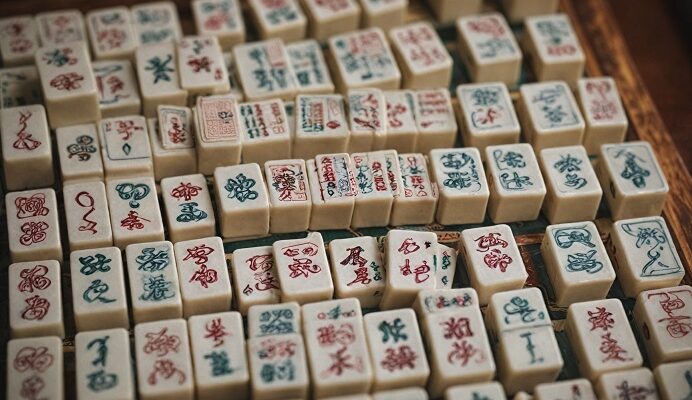Even though the air is already tinged with the essence of China, let’s add to it by playing a Chinese melody on the violin for the Mahjong Solitaire game, which originated from the classic Mahjong.
Mahjong burst onto the scene in mid-19th century China, rattling its way through time akin to the clacking of tiles. As the 20th century rolled in, the game’s glamour spread far beyond its origins.
Its strategic beauty, involving the drawing and discarding of tiles, arrested minds worldwide, winning over lovers of challenge and intrigue while nurturing community. This global spread led to the creation of various versions, such as Japanese Mahjong (also known as “riichi mahjong”) and American Mahjong.
And with the advent of computers and the internet, new chapters were added to Mahjong’s rich history.
To uncover more about these fascinating developments, keep reading with enthusiasm.
Early Digital Adaptations
Mahjong took a wild leap from the table to the screen, and boy, did it make a splash! The digital age brought us Mahjong Solitaire, a perfect form of the game for solo players, swapping out cards for the well-known Mahjong tiles in a solitaire-style matching challenge.
Early computer games tried their best to capture the magic of Mahjong, even if the graphics were a bit rough around the edges. Microsoft and Oberon Games were the real MVPs here, dropping Mahjong Titans in 2012, and really getting the digital ball rolling faster. These first attempts were pretty bare-bones, sticking to the basics with a handful of tile layouts and no-frills visuals.
However, the accessibility and convenience of playing on a personal device proved a winning formula, contributing to the game’s growing popularity.
Graphical and Thematic Enhancements
As technology progressed, so did the aesthetics of Mahjong Solitaire. Simple 2D tiles gave way to detailed 3D designs, adding depth and visual appeal.
On some sites, impressive graphics included falling flowers and tiles from your chosen layout flying into place with stunning animation. The addition of themes, from tranquil nature scenes such as autumn to whimsical settings such as Halloween, further enriched the game.
These visual enhancements were more than just for show; they crafted a more immersive and engaging environment, drawing players into enthralling virtual worlds.
Gameplay Innovations
Mahjong Solitaire didn’t stop at visual overhauls. Developers introduced new game modes, for example, timed challenges, to keep things exciting. Power-ups, such as shuffles or hints on Mahjongg Mentor and other sites, offered strategic advantages, while special tiles with unique effects added shocking surprises.
The integration of social features, including leaderboards, created the community feeling online and competition, greatly enhancing the game’s replayability.
Mobile Era and Beyond
The ascent of smartphones brought Mahjong Solitaire directly into the hands of players around the globe. Mobile adaptations featured intuitive touchscreen controls and layouts optimised for smaller screens.
Although free-to-play models with in-app purchases and ads became prevalent on many apps and sites, the core gameplay remained as gripping as ever.
The ongoing popularity of Mahjong Solitaire across different mediums showcases its adaptability and lasting attraction in the ever-metamorphosing gaming space.



